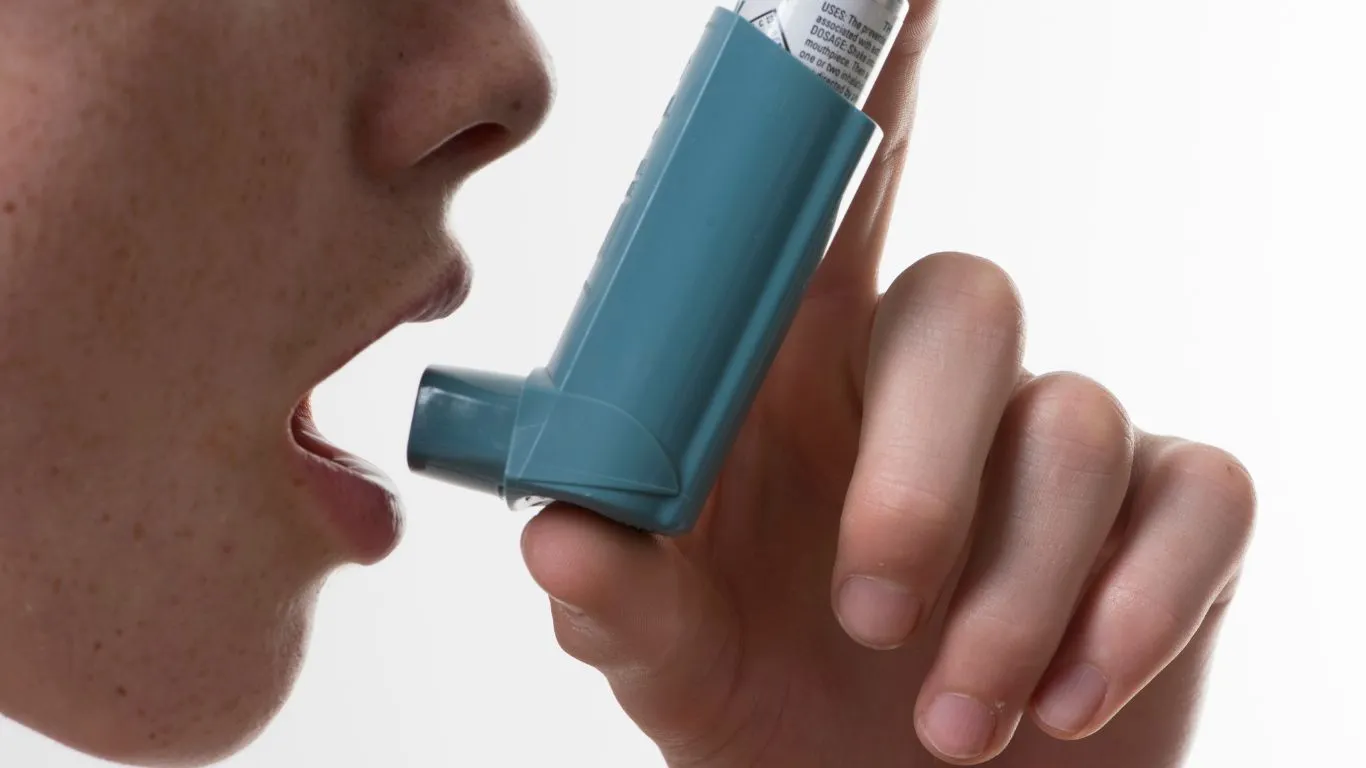Can Asthma Cause Shoulder and Back Pain? Understanding the Link
If you’ve ever experienced that nagging ache or sharp discomfort in your shoulder or back when your asthma flares up, you might be wondering: Can asthma cause shoulder and back pain? As a pulmonary nurse practitioner, I’ve seen plenty of patients ask this question. The truth is, asthma isn’t just about wheezing and shortness of breath. Sometimes, the way your body reacts to an asthma attack or ongoing inflammation can lead to muscle tension and pain in unexpected places, like your upper back or shoulders.
Before diving deep into this, let me share a quick story. I once treated a middle-aged woman who kept coming in complaining about persistent shoulder pain. After multiple tests, nothing pointed directly to a joint or muscular issue. But when we dug into her respiratory history, it became clear her asthma was the silent culprit behind that discomfort. This is a great reminder that asthma’s effects can be more far-reaching than many realize.
Understanding the Link: Can Asthma Cause Shoulder and Back Pain?

Asthma primarily affects your lungs, but the process of struggling to breathe can involve your chest, shoulders, and back muscles in ways that cause pain or discomfort. Here’s the deal: when asthma symptoms worsen, your body works harder to get enough oxygen, often engaging muscles that aren’t used to being so active. This can lead to soreness or even pain.
Muscle Strain from Breathing Hard
When you have an asthma attack or persistent symptoms, your accessory breathing muscles—those around your shoulders, neck, and upper back—kick into overdrive. These muscles are usually relaxed, but during respiratory distress, they help expand your chest to pull in more air. The result? Muscle fatigue and strain, which can feel like shoulder or upper back pain.
Think about it like this: if you suddenly start carrying a heavy backpack or doing a new workout, your muscles will ache afterward. The same goes for these breathing muscles during an asthma episode.
Inflammation and Nerve Irritation
Another piece of the puzzle is inflammation. Asthma involves inflammation of the airways, but sometimes this inflammation can irritate nerves near your lungs and chest wall. This irritation can send referred pain signals to your shoulders and upper back. It’s a subtle connection but a real one.
Posture and Asthma
Many people with asthma tend to develop a hunched or forward-leaning posture, especially if they’re trying to catch their breath frequently or avoid tightness in their chest. Over time, this poor posture can contribute to muscle imbalances and tension in the upper back and shoulders, causing chronic pain that may be mistakenly blamed on something other than asthma.
Common Symptoms That Link Asthma with Shoulder and Back Pain

Identifying whether your shoulder or back pain is related to asthma can sometimes be tricky. But here are some common signs that the two might be connected:
- Pain worsens during or right after an asthma attack.
- Discomfort feels like muscle soreness or tightness rather than joint pain.
- Pain occurs alongside other asthma symptoms such as wheezing, coughing, or chest tightness.
- Pain improves when asthma is better controlled with medication.
- Feeling of tension or stiffness in the neck and shoulder muscles.
In my clinical experience, patients who manage their asthma effectively with inhalers, lifestyle changes, and sometimes physical therapy report less shoulder and back pain. This confirms how much respiratory health ties into overall muscle comfort.
How to Manage Shoulder and Back Pain Related to Asthma

So, now that we understand how asthma can lead to shoulder and back pain, the big question is: what can you do about it? In my years as a pulmonary nurse practitioner, I’ve seen firsthand how managing asthma well can make a huge difference not only in breathing but also in easing those uncomfortable aches.
Optimize Your Asthma Treatment
The most important step is to keep your asthma under control. That means consistently using your prescribed medications, whether they’re inhaled corticosteroids, bronchodilators, or other treatments your doctor recommends. When asthma symptoms are minimized, the extra strain on your breathing muscles often reduces too.
Here’s a little tip from my clinical practice: I always encourage my patients to have a personalized asthma action plan. This plan helps them recognize early signs of worsening asthma and take quick action before it gets out of hand. Less frequent and intense asthma attacks usually mean less shoulder and back discomfort.
Incorporate Breathing Exercises
Breathing techniques can be a game-changer for people struggling with asthma-related muscle pain. Simple exercises like diaphragmatic breathing or pursed-lip breathing can help you breathe more efficiently and reduce the workload on your accessory muscles—the ones that often cause that shoulder and back tension.
From my experience, teaching patients these exercises during their visits or pulmonary rehab sessions empowers them. Not only do they feel more in control of their breathing, but they also report a noticeable drop in muscle tightness and pain.
Stretching and Strengthening
Posture plays a huge role here. Because asthma can cause you to hunch forward or hold your shoulders tensely, targeted stretches and strengthening exercises can relieve pain and prevent it from becoming chronic.
Some of my favorites to recommend include:
- Chest openers: These counteract the tightness from hunching and help expand your lungs fully.
- Shoulder rolls and shrugs: To release tension and improve circulation.
- Upper back stretches: Gentle stretches that relieve stiffness and encourage better posture.
If you’re not sure where to start, physical therapists familiar with respiratory issues can guide you through exercises tailored to your needs. I often work closely with PTs to help my patients regain comfort and mobility.
When to See a Doctor About Shoulder and Back Pain

It’s crucial to know when your pain might be signaling something more serious. Not all shoulder or back pain in people with asthma is caused by the asthma itself. Sometimes, it can be a sign of other conditions that need immediate attention.
Warning Signs That Need Medical Attention
- Sudden, severe chest pain or tightness that doesn’t improve with asthma treatment.
- Sharp, shooting pain that radiates down your arm or into your neck.
- New numbness, weakness, or tingling sensations in your arms or hands.
- Persistent or worsening pain that limits your daily activities.
- Shortness of breath that suddenly worsens or doesn’t respond to your usual asthma meds.
If you experience any of these symptoms, don’t wait—get evaluated by a healthcare professional. While asthma-related muscle pain is common and usually manageable, these signs could indicate something like a cardiac event, nerve compression, or another serious problem.
Diagnostic Tools I Use in Practice
To pinpoint the cause of pain, I often rely on a combination of tools:
- Physical exam: Checking muscle tenderness, posture, and breathing patterns.
- Pulmonary function tests: To evaluate how well your lungs are working.
- Imaging: X-rays or MRIs if we suspect structural issues or nerve involvement.
- Referral to specialists: Sometimes a pulmonologist, orthopedist, or neurologist gets involved for a comprehensive evaluation.
Understanding exactly what’s going on helps us tailor treatment specifically to your needs and improve your quality of life.
Tips From a Pulmonary Nurse Practitioner: Daily Habits to Help

In my years caring for people with asthma, I’ve learned that small daily habits can make a world of difference in managing both asthma and related muscle pain.
- Stay hydrated: Water helps keep your airway secretions thin and muscles hydrated.
- Maintain a healthy weight: Extra weight can increase the strain on your lungs and muscles.
- Practice good posture: Be mindful of how you sit and stand throughout the day to avoid unnecessary strain.
- Avoid triggers: Whether it’s allergens, smoke, or cold air, minimizing exposure reduces asthma flare-ups.
- Manage stress: Stress can tighten muscles and trigger asthma, so consider relaxation techniques like meditation or gentle yoga.
Remember, every person’s asthma journey is unique. What works well for one person might need tweaking for another. That’s why I always encourage open communication with your healthcare team so we can adapt your care plan as needed.
Long-Term Strategies to Prevent Shoulder and Back Pain from Asthma

Living with asthma isn’t just about managing sudden flare-ups—it’s about taking control of your health every day to reduce complications like shoulder and back pain. Based on my clinical experience, I can’t stress enough how important it is to adopt long-term habits that support your respiratory system and your muscles.
Consistent Asthma Monitoring
One of the biggest mistakes I see patients make is thinking asthma only needs attention when symptoms feel severe. In reality, ongoing monitoring is key. Whether it’s keeping a symptom diary, using a peak flow meter, or regular check-ins with your healthcare provider, staying ahead of your asthma helps prevent the muscle strain that leads to pain.
Remember, early intervention when you notice subtle changes in your breathing or discomfort can make a world of difference.
Integrating Physical Activity the Right Way
Exercise can be intimidating for someone with asthma, especially if you’ve had painful experiences breathing hard. But movement is actually one of the best things you can do—when done thoughtfully.
I always encourage gentle aerobic activities like walking, swimming, or cycling, combined with strength training and flexibility exercises. These not only improve lung function but also strengthen your back and shoulder muscles, reducing the likelihood of pain.
Before starting any new exercise routine, though, talk with your healthcare provider. We can help tailor a plan that’s safe, effective, and enjoyable for you.
Physical Therapy and Alternative Therapies
In some cases, I recommend physical therapy to patients experiencing persistent muscle pain related to asthma. Physical therapists skilled in pulmonary rehab can offer hands-on treatments, posture correction, and personalized exercise programs that target your pain areas while respecting your respiratory limitations.
Additionally, some patients find relief through alternative therapies such as:
- Massage therapy: Great for easing muscle tension and improving circulation.
- Acupuncture: Some studies suggest it can help reduce pain and inflammation.
- Yoga and Pilates: These improve breathing control, flexibility, and muscle strength—all beneficial for asthma management.
These therapies are complementary, so it’s essential to discuss them with your doctor before diving in.
Real-Life Patient Stories: Asthma and Muscle Pain

Over the years, I’ve had the privilege of helping many people understand the connection between asthma and shoulder or back pain. One patient I recall was a young father who’d been battling asthma for years but hadn’t connected his persistent upper back soreness to his respiratory condition.
Once we addressed his asthma more aggressively and incorporated breathing exercises and physical therapy, his pain significantly decreased. He shared with me how being able to move without discomfort allowed him to be more active with his kids—something he deeply valued.
Stories like his highlight how treating the whole person, not just the lungs, makes all the difference. It’s not just about medications; it’s about lifestyle, awareness, and proactive care.
Frequently Asked Questions About Asthma and Shoulder/Back Pain
Can asthma medication cause muscle pain?
Some asthma medications, especially oral steroids when used long-term, can cause muscle weakness or aches. However, inhaled medications typically don’t have this effect. Always discuss any side effects with your provider.
Is shoulder and back pain a sign of worsening asthma?
Not necessarily, but it can be a sign that your breathing muscles are overworked. If you notice the pain alongside increased shortness of breath or wheezing, it’s important to get checked.
Are there any exercises I should avoid?
High-impact or intense exercises that trigger asthma attacks should be avoided unless you have good control and guidance from a healthcare professional. Low-impact, breathing-focused exercises are generally safer.
When should I be worried about chest pain?
Chest pain that’s sudden, severe, or accompanied by symptoms like sweating, nausea, or radiating pain should be treated as an emergency. Always seek immediate care in those cases.
References
Disclaimer
This article is intended for informational purposes only and should not replace professional medical advice, diagnosis, or treatment. Always consult with your healthcare provider regarding any concerns about asthma or related pain. Individual cases may vary, and treatment should be tailored to your specific health needs.

Bianca Nala is a compassionate Nurse Practitioner with a strong background in primary and respiratory care. As a health writer for Healthusias.com, she combines her clinical expertise with a talent for clear, relatable storytelling to help readers better understand their health. Bianca focuses on topics like asthma, COPD, chronic cough, and overall lung health, aiming to simplify complex medical topics without losing accuracy. Whether she’s treating patients or writing articles, Bianca is driven by a single goal: making quality healthcare knowledge accessible to everyone.






